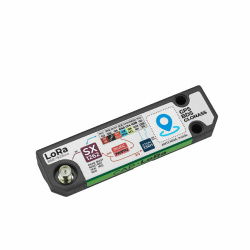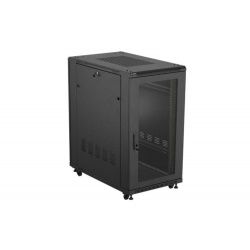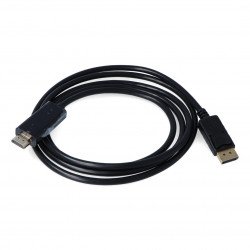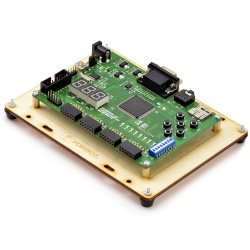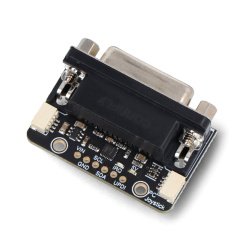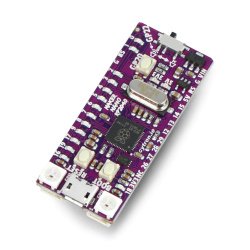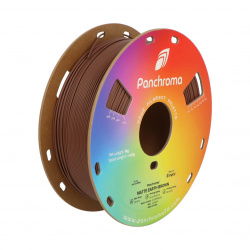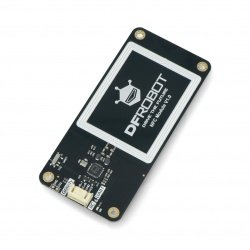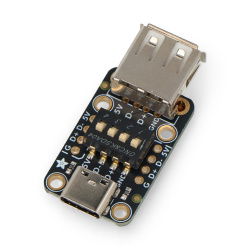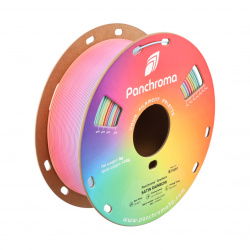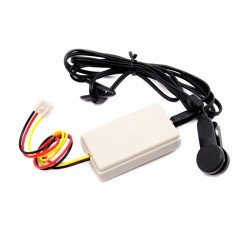Measurement of muscle activity for bodybuilders and not only!
Sensors of muscle activity are devices designed to study muscle activity by detecting the presence of an electric tension in the muscles. In medical diagnostics, this process is called electromyography (EMG). When you want, for example, to stretch the muscles of the right hand, Your brain sends an electrical impulse to innervation of the relevant muscles, resulting in stimulation of the motor neurons, muscle fibers that form the structure of muscles. Napniesz the stronger the muscles, the more muscle fibers will be excited simultaneously in order to create the corresponding joint power. The muscle sensors detect electrical signals of the muscles that reflect their compression and rozkurczanie, and then convert them to an analog signal voltage that can be read, for example, via analog-to-digital Converter on the base. The measurement principle is very similar, as in a conventional analog woltomierzu with the fact that strict output signal from the sensor activity of the muscles is not constant or variable periodically, and irregularly alternating voltage EMG, which the passage of time reminds of the sound wave only, for example, composition. The EMG pickups have a practical application in the analysis of neuromuscular blockade, which will help to determine the necessary for the person a set of exercises to maintain the muscles in the correct physical form.
Measurement of heart rate of the heart by means of electronic equipment
One of the most frequently used methods of heart rate measurement heart fotopletyzmografia. This method is based on measuring changes in the volume of blood flowing through the part of the circulatory system of the body, as a result of changes in the intensity of light passing through the vessels of a specific organ (e.g. heart or liver). There are two types fotopletyzmografii - transmission, which consists in generating and transmitting the light beam through any area of the body rich in blood vessels (e.g., eardrum) and the reception sent a beam of light through the sensor, and fotopletyzmografia odbiciowa in which the light is directed to the surface region ukrwionego (e.g., a finger tip) and is reflected towards the measuring sensor. For applications requiring a control pulse of the human heart, one of the most important parameters is the determination of the frequency of the heartbeat, i.e., the number of strikes rozkurczowych for a minute. The volume of flowing blood in the body, depends on the number of heart beats. To measure the pulse of the heart, plays an important role in hemoglobin, which stores energy in the light of changes in the number of this energy to cause the formation of electrical signals that accurately reflect the frequency of heartbeat.
Heart rate sensors - a simple design that gives accurate measurement!
The basic design of a pulse sensor of the human heart, contains a LED and fotorezystor or fotodiodę. The heartbeat causes a change in the amount of flowing blood in different body areas of the body. Tissue in the area of measurement will be illuminated by the light sent from LEDs. Then, the light ray will be reflected on the fabric (in the case of measurements on opuszku finger), or sent to the area ukrwiony (in the case of measurements on the ear). Part of the previously sent light, who's that from, Papa hemoglobin or reflected from the surface of measurement on the body, remains inertia in the direction of the light sensor in the form fotorezystora or photodiodes. The amount of energy sent in the direction of the light sensor depends on the amount of blood flowing through the measurement field. The output signal from the sensor varies in proportion to every beat of the heart. Trip mileage of the output voltage signal from the sensor, built from a constant component that represents the tissue in the area of measurement and a variable component, where the amplitude and frequency are variable synchronously with the impulse of the heart, which is the priority information to diagnose heart - because of this, the heart rate sensors are constructed in such a way that the variable component was separated from the DC component. With this purpose, the output signal from the force sensor through a properly selected filter high frequencies and low frequencies, and then converted into a sequence of pulses using a comparator or Converter analog-to-digital, as a rule, embedded in the microcontroller.

































































































































































































































































































































